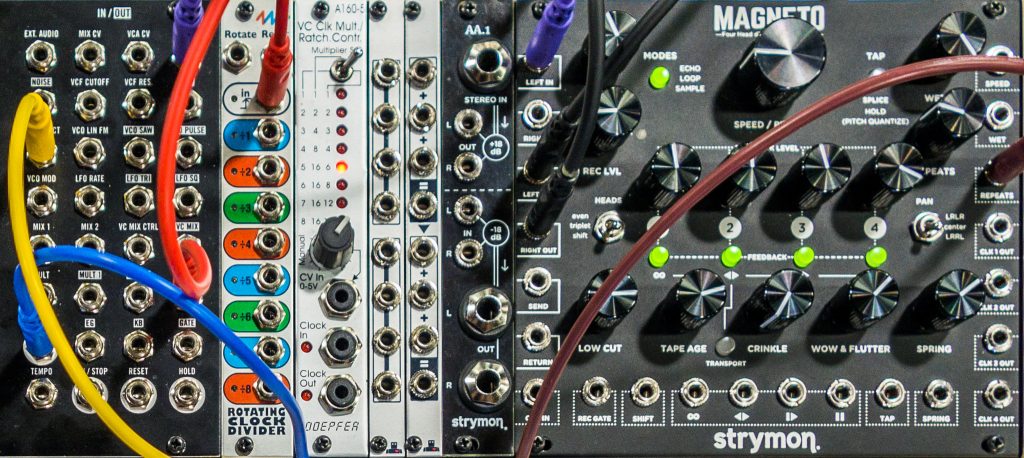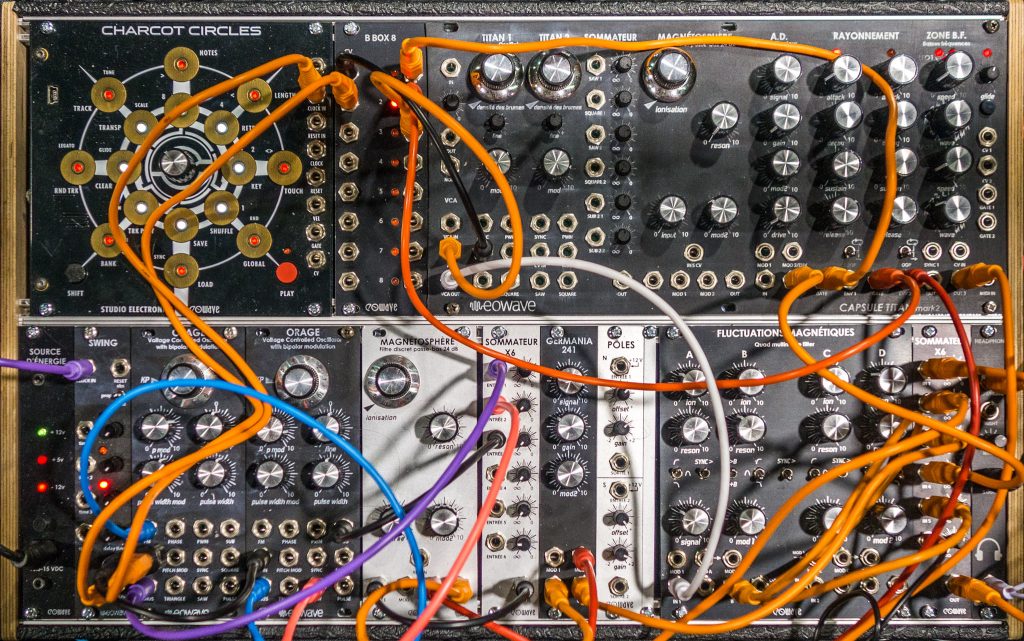“Here we are again, the start of the end, but there’s more…” – Todd Rundgren/International Feel
I tried to see every module manufacturer I could find at NAMM that had new products, and I think I came pretty close…but I’m sure I missed a few. (My apologies.) Here are the last four I had a chance to chat with and take pictures of:
Strymon
A few booths at NAMM set up jam stations with usually an Arturia Keystep, Moog Mother-32, and collection of modules, inviting you to jam with their latest releases on headphones by yourself. Of those, the module I spent the most time jamming with at NAMM was the Strymon Magneto stereo looper and 4-head tape delay + spring reverb simulator ($599, shipping now).
I’m the type of person who likes their delays to evolve rather than be perfect copies, so I really enjoyed the effect of the Low Cut, Tape Age, Crinkle, and Wow & Flutter controls, as well as independent playback level and feedback toggles for each “head.” My biggest criticism is that the tape simulation knobs, at the very least, should have voltage control inputs. A few parameters do have CV, though, that can be modulated into the low audible range. I had a lot of fun patching the mod wheel of the keyboard controller to the Magneto’s Repeats control and playing around with sending phrases into runaway feedback and then dragging them back into normal decay. Strymon is also to be complimented for already having a large set of instructional videos online.
Strymon also introduced an 18dB line level shifter module, which they displayed in a lunchbox with the Magneto to turn it into a portable effect for non-modular applications.
I participated in a YouTube NAMM Round Up hosted by DivKid, and the question came up whether or not the Magneto had a recognizable “sound” that people might become over-familiar with, making it an expensive but short-lived fad. Although their tape simulation effects such as Crinkle are certainly distinctive, overall the unit had a wide-open, uncolored sound (when you wanted) that I think will make it useful over a wide variety of applications for quite some time.
Eowave
Eowave out of France always makes interesting modules with a unique bent and love for discrete transistor circuitry. Marc Sirguy of Eowave demonstrated a few new modules and a few updated ones (and also fried my ears on more than one occasion).
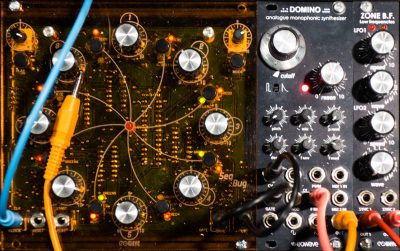
Eowave also showed an update to their Orage triangle core VCO that supports both exponential and linear through-zero frequency modulation, adding a suboctave output and switching the face plate color to black (matching all of their other new modules). Finally, they introduced the rather out-of-character but still very useful Swing module that variably delays four alternate triggers (i.e. eighth notes # 2, 4, 6, and 8) under voltage or front panel control.
Mordax
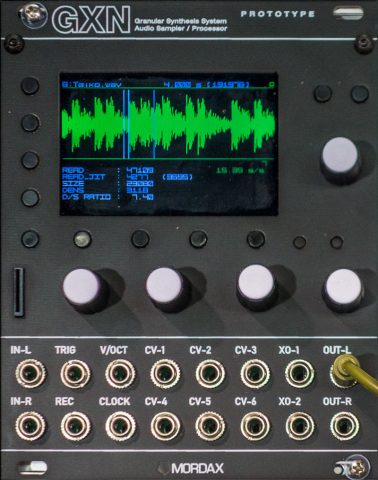
The GXN was in a very early state at NAMM, but was already performing many of the expected granular processing functions. It will be very interesting to see how this module progresses. (Oh, and by the way: The panel was black. “Black is the new black” was definitely a theme of the show this year.)
Delptronics
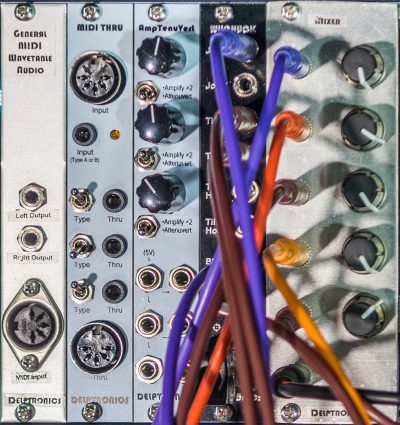
- MIDI-Thru, designed to make peace between the two competing 3.5mm to 5-pin DIN formats. It auto-detects whether the DIN connector or the 3.5mm input are in use, and which wiring the 3.5mm is using. It then converts this to three additional 3.5mm thru connections (with a switch deciding which format to use for each one), plus a 5-pin DIN Thru connector.
- AmpTenuVert, with three inputs that are switchable between being bipolar attenuverters, or gain controls that can amplify by up to 2x. 5v DC bias voltages are normalled to the input jacks, and the independent output jacks mix downward based on whether or not something is plugged into them. You’ve heard me say many times before that more utility mixers need to be able to amplify the signal as well, so obviously I’m happy to see that feature here.
- WiiCHUCK, which is most fun of the three. It takes a Nintendo Nunchuk-style controller and breaks out its movements into voltages for your Eurorack system including joystick X & Y, tilt X & Y, and more.
Prices are not finalized for these three modules, but each will be under $200.
You also can’t help but to notice the General MIDI Wavetable Audio prototype module in the image above (click on it to see a 2x version). You may have seen this demonstrated before; it’s listed as “coming soon” on the web site for $150. It features the full General MIDI sound set plus reverb and chorus with 38- to 64-voice polyphony, using the DREAM General MIDI chip from France.
And that was my NAMM show floor experience this year. A lot of fun stuff also happened off the show floor, including the Old Men of MIDI dinner that I’m part of, as well as having Simone Fabbri of Frap Tools, Tom Wies of Synth Anatomy, and Jim Coker of Five12 over to our room various evenings (Simone – a dedicated cook – made a mutant version of spaghetti bolognese from scratch in our room for my wife Trish’s birthday during the show). I hope to get to more shows beyond NAMM in the next couple of years, including Moogfest this year and SuperBooth next year. Thanks for reading!


